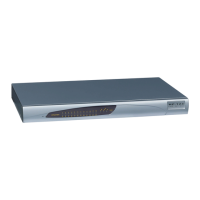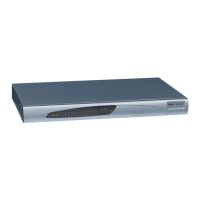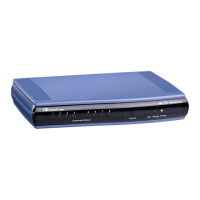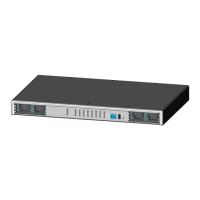User's Manual 596 Document #: LTRT-27045
Mediant 1000B Gateway & E-SBC
a response to input from the Tel side. If the FXO receives a REFER request (with or
without replaces), it generates a new INVITE according to the Refer-To header.
27.13.3 Call Termination on FXO Devices
This section describes the device's call termination capabilities for its FXO interfaces:
Calls terminated by a PBX (see ''Call Termination by PBX'' on page 596)
Calls terminated before call establishment (see ''Call Termination before Call
Establishment'' on page
597)
Ring detection timeout (see ''Ring Detection Timeout'' on page 597)
27.13.3.1 Calls Termination by PBX
The FXO device supports various methods for identifying when a call has been terminated
by the PBX.
The PBX doesn't disconnect calls, but instead signals to the device that the call has been
disconnected using one of the following methods:
Detection of polarity reversal/current disconnect: The call is immediately
disconnected after polarity reversal or current disconnect is detected on the Tel side
(assuming the PBX/CO generates this signal). This is the recommended method.
Relevant parameters: EnableReversalPolarity, EnableCurrentDisconnect,
CurrentDisconnectDuration, CurrentDisconnectDefaultThreshold, and
TimeToSampleAnalogLineVoltage.
Detection of Reorder, Busy, Dial, and Special Information Tone (SIT) tones: The
call is immediately disconnected after a Reorder, Busy, Dial, or SIT tone is detected
on the Tel side (assuming the PBX / CO generates this tone). This method requires
the correct tone frequencies and cadence to be defined in the Call Progress Tones
file. If these frequencies are unknown, define them in the CPT file. The tone produced
by the PBX / CO must be recorded and its frequencies analyzed. This method is
slightly less reliable than the previous one.
Relevant parameters: DisconnectOnBusyTone and DisconnectOnDialTone.
Detection of silence: The call is disconnected after silence is detected on both call
directions for a specific (configurable) amount of time. The call is not disconnected
immediately. Thus, use this method only as a backup option.
Relevant parameters: EnableSilenceDisconnect and FarEndDisconnectSilencePeriod.
Special DTMF code: A digit pattern that when received from the Tel side, indicates to
the device to disconnect the call.
Relevant ini file parameter: TelDisconnectCode.
Interruption of RTP stream: Relevant parameters: BrokenConnectionEventTimeout
and DisconnectOnBrokenConnection.
Note: This method operates correctly only if silence suppression is not used.
Protocol-based termination of the call from the IP side

